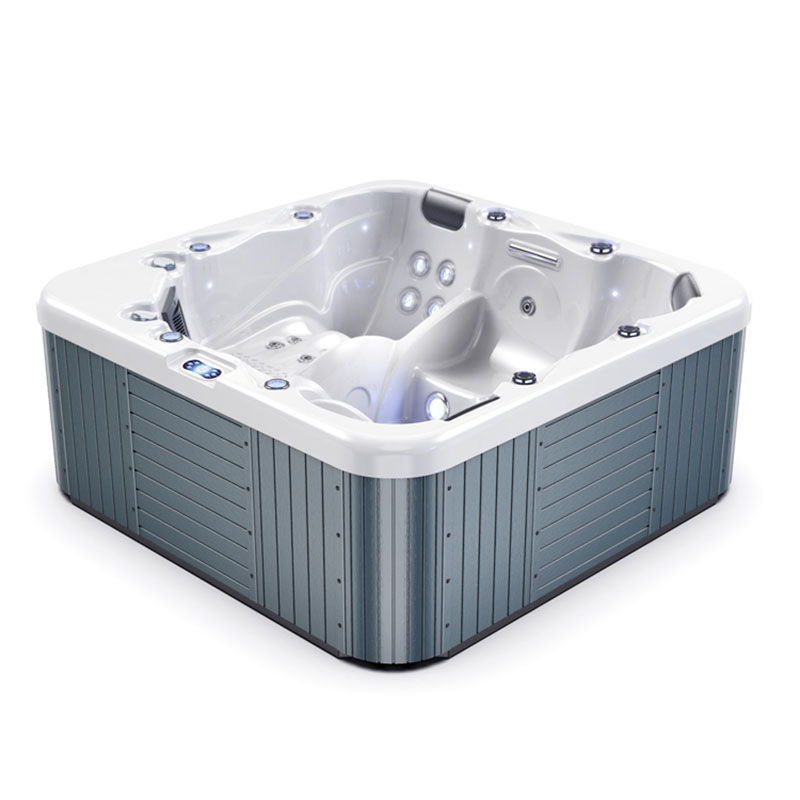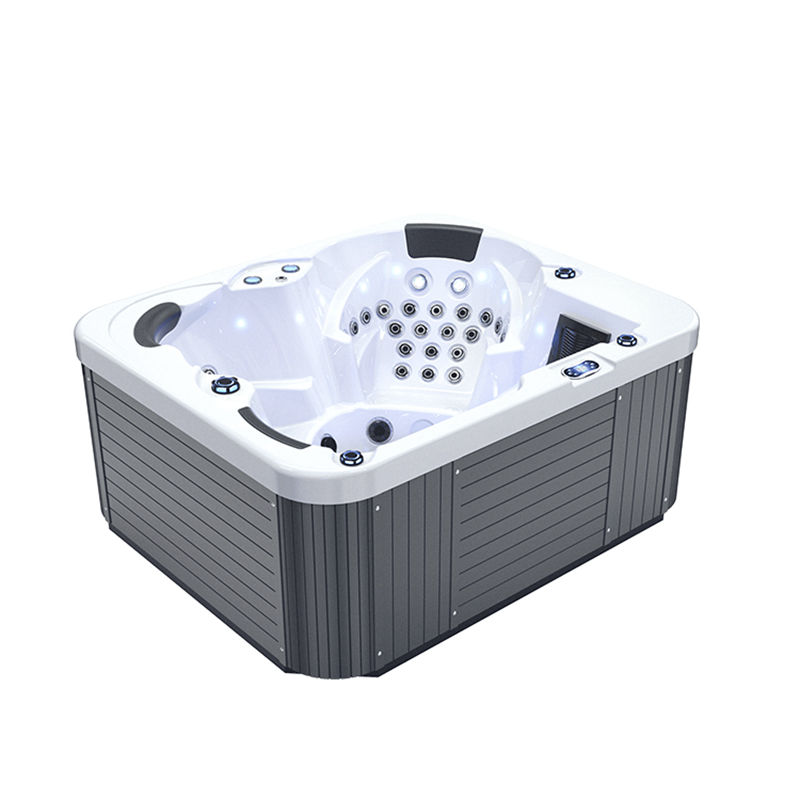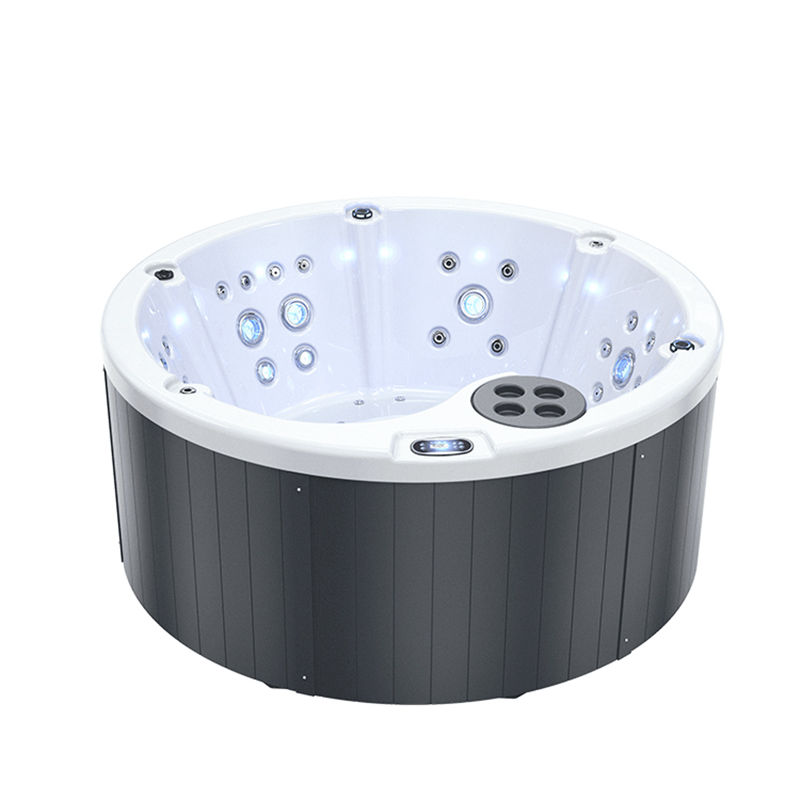A swim spa tub, a hybrid water sports device that combines the functions of a swimming pool and a hot tub, is increasingly popular among home users. As a high-end aquatic facility that combines fitness, entertainment, and relaxation, a swim spa tub not only meets users' daily swimming and hydrotherapy needs, but also provides a private and comfortable aquatic environment.
However, with the growing popularity of swim spa tubs, issues related to their use and maintenance are attracting increasing attention from consumers. The filter, a crucial component for maintaining water quality, ensuring hydrotherapy results, and extending the life of the device, has become a core concern for many users.
This article will explore in detail whether a swim spa tub includes a filter, the role of the filter in a swim spa tub, how to maintain the filter, and factors to consider when choosing a filter, to help consumers better understand and use this device.
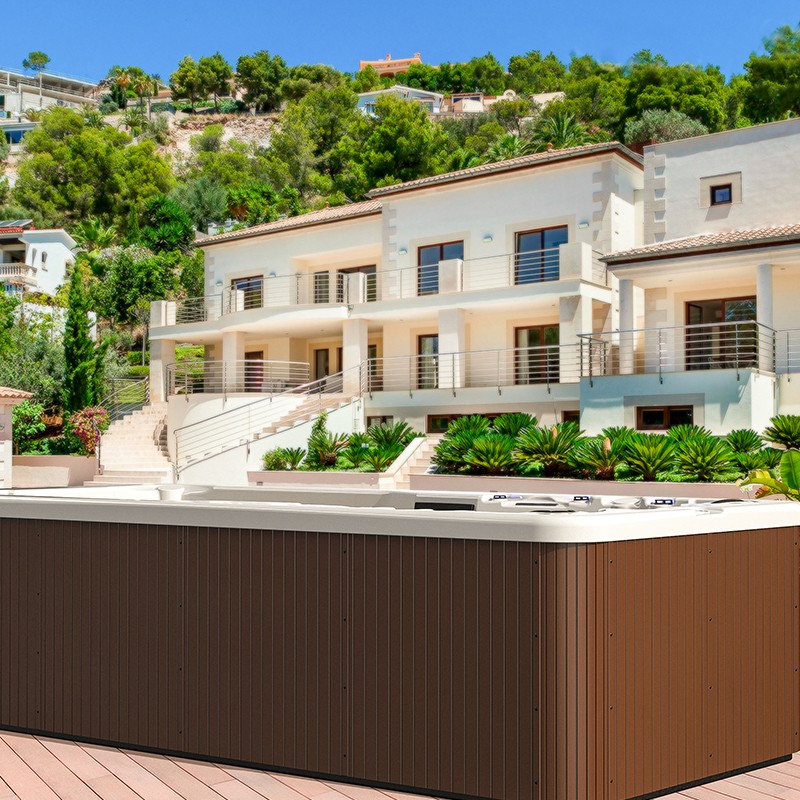
What is the function of a swim spa tub?
First, let's understand the basic functions and structure of a swim spa tub. A swim spa tub typically combines the features of a swimming pool and a hot tub, featuring a large water area where users can engage in water sports, swimming, and even water aerobics. It also features a powerful water flow system, air massage system, and constant temperature control system, providing a comfortable spa experience. The main advantage of a swim spa tub is its compact design, making it suitable for home use, while offering the combined experience of a swimming pool and a spa tub.
However, compared to traditional swimming pools, the use and maintenance of a swim spa tub is more complex. This is because it requires not only maintaining clean water but also ensuring the proper functioning of various systems, particularly those for water flow, air flow, and heating. Filters play a crucial role in this process.
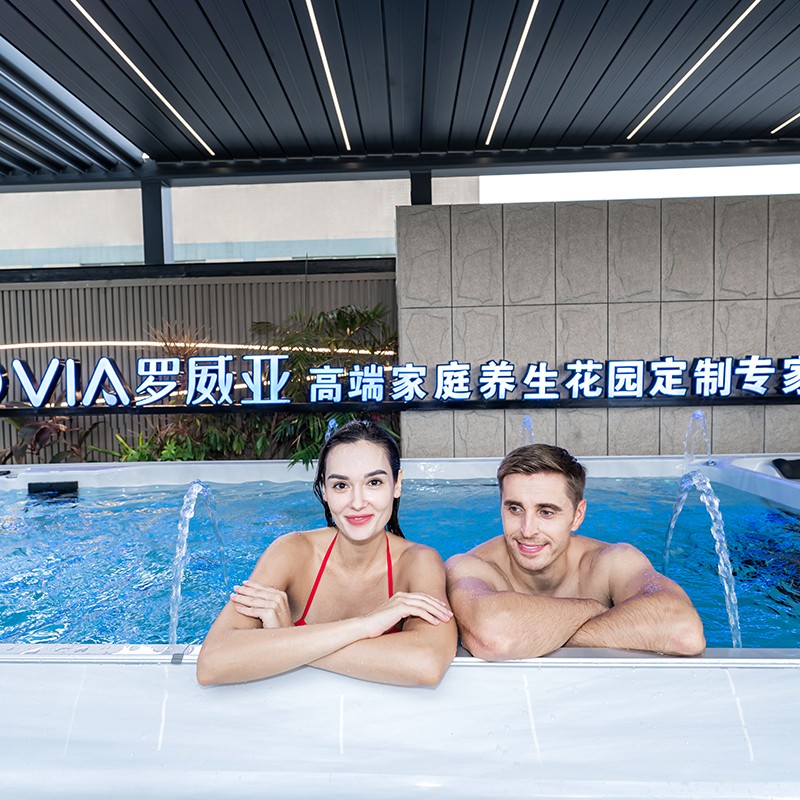
Do swim spa tubs have filters?
The answer is yes; swim spa tubs usually have filters. Unlike traditional swimming pools, the water volume in a swim spa tub is relatively small, requiring regular cleaning and water changes to ensure clean water quality. A filter is an essential component of a swim spa tub system, helping to remove impurities and dirt from the water, maintaining clarity and purity, and preventing the growth of harmful substances such as bacteria and algae.
Swim spa tub filters typically come in two types: mechanical and chemical. Mechanical filters typically physically remove suspended matter and particles from the water, ensuring clear water quality. Chemical filters, on the other hand, use chemicals to kill bacteria and other microorganisms in the water. Generally speaking, most swim spas are equipped with mechanical filters, while chemical filters complement the cleaning process by adding chlorine or other disinfectants.
What is the role of a filter in a swim spa?
The filter in a swim spa performs several important functions. It not only filters impurities from the water but also helps maintain water circulation, maintains water quality, and extends the life of the equipment. The following are some key roles of filters in a swim spa:
1. Cleaning Water Quality
The primary function of a filter is to clean the water, removing suspended matter, impurities, sand, and other contaminants. As water circulates through the swim spa system, the filter's sophisticated mesh and media capture these impurities, maintaining water clarity. Without a filter, impurities can accumulate, degrading water quality and potentially affecting the user's health.
2. Prevent Bacterial Growth
Impurities and organic matter in water provide a breeding ground for bacteria and algae. Filters effectively remove organic contaminants from water, thereby reducing the growth of microorganisms such as bacteria and algae. Furthermore, when used in conjunction with disinfectants, filters effectively inhibit pathogenic microorganisms in the water, preventing water quality degradation and ensuring the safety of the swim spa water.
3. Promote Water Circulation
A swim spa's water flow system relies on the water pressure and circulation power provided by filters. Filters continuously circulate water through the system, not only cleaning the water but also enhancing the effectiveness of hydrotherapy and swimming. With uniform water flow, the swim spa provides a more comfortable hydrotherapy experience and a more efficient aquatic space.
4. Extend Equipment Life
Filters remove sediment and impurities from the water, preventing them from depositing on critical equipment such as pumps and heaters, thereby extending the life of the swim spa equipment. If filters are not used or become ineffective, impurities in the water may accumulate in the equipment, causing malfunction, damage, or even premature aging.
5. Maintaining a Constant Water Temperature
Some high-end swim spas also feature a temperature control system that circulates water through a filter to maintain a consistent and stable water temperature. By promoting water flow, the filter helps the heating system distribute heat evenly, preventing large temperature fluctuations.
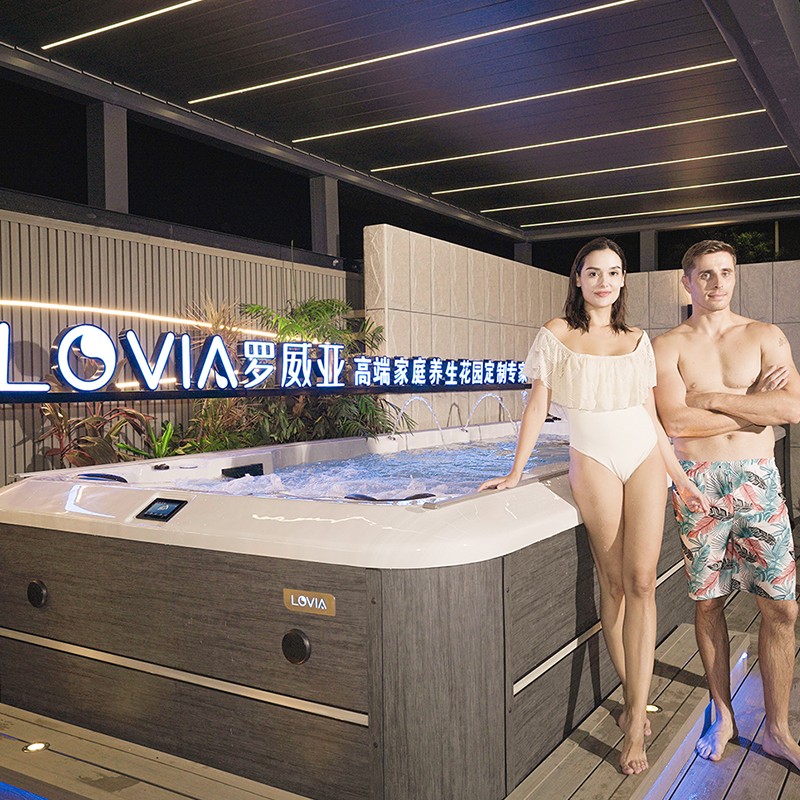
What are the types of swim spa filters?
Swim spa filters typically come in two main types: paper and sand. Each has its own advantages and disadvantages, and choosing the right filter based on your needs and equipment usage is crucial.
1. Paper Filters
Paper filters are the most common type of filter used in swim spas. They use a special paper mesh that effectively captures suspended matter and impurities in the water. While these filters typically offer strong filtration, they require regular cleaning and replacement. Because they are relatively inexpensive, paper filters are the preferred choice for many swim spa users.
• Advantages: Affordable price, excellent filtration, and ease of use.
• Disadvantages: Requires regular filter replacement and has a shorter lifespan.
2. Sand Filters
Sand filters typically consist of a layer of sand or other filter media. As water passes through the sand, the sand traps impurities in the water. Maintenance for this type of filter is relatively simple, requiring only regular cleaning of the sand layer. Sand filters have a long lifespan and are suitable for frequently used swim spas.
• Advantages: Long lifespan, easy maintenance, and consistent performance.
• Disadvantages: Not as fine a filter as paper filters and relatively expensive.
3. Carbon Filters
Some high-end swim spas also feature carbon filters, which absorb harmful chemicals, odors, and organic contaminants from the water, ensuring pure water quality. Carbon filters are suitable for areas with poor water quality, providing additional water purification.
• Advantages: Removes odors and purifies water.
• Disadvantages: Higher price and requires regular replacement.
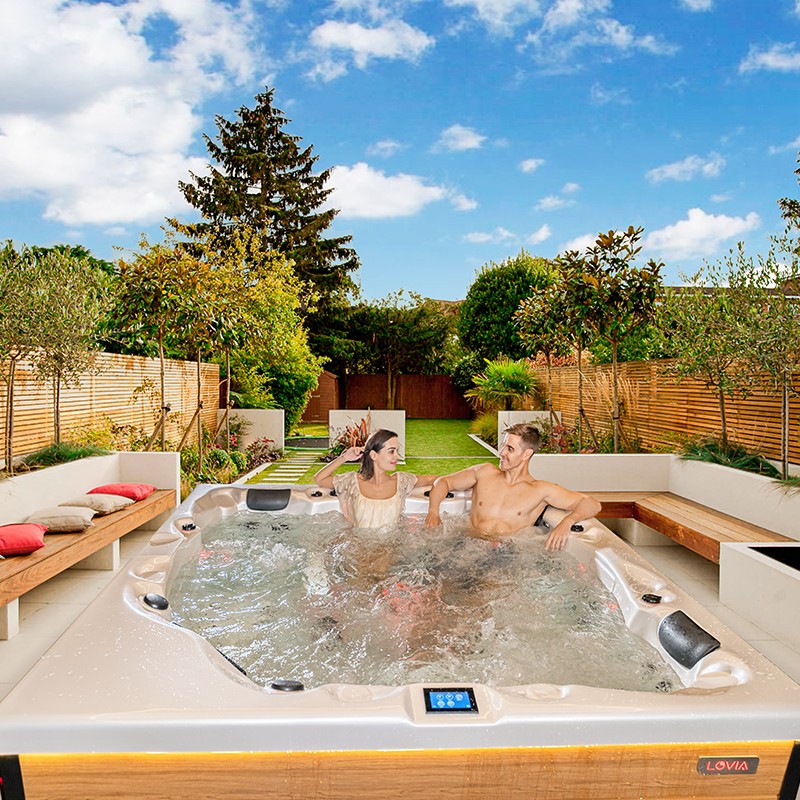
Swim spa filter maintenance and replacement
Swim spa filters require regular maintenance and replacement to ensure efficient operation. Maintenance requirements vary depending on the filter type, but generally, the following are basic filter maintenance requirements:
1. Regular Cleaning
Both paper and sand filters require regular cleaning. Generally, filters should be cleaned every two to four weeks. Paper filters can be cleaned with a high-pressure water jet, while sand filters require backwashing to remove impurities. During cleaning, ensure that all screens and filter media are thoroughly cleaned to avoid affecting filtration effectiveness.
2. Regular Inspection
Regular inspections of the filter are also important. Check for damage, cracks, or other malfunctions, and ensure unimpeded water flow. If damage or reduced efficiency is detected, replace it promptly.
3. Filter Replacement
Even after cleaning, paper filters typically only last three to six months and should be replaced regularly. Sand filters have a longer lifespan, but the sand should also be regularly inspected to see if it needs replacement or cleaning. When replacing filters, choose a filter that matches your swim spa model to ensure optimal filtration.
How to Choose the Right Filter?
Choosing the right filter is a crucial part of swim spa tub usage and maintenance. The following are factors to consider when choosing a swim spa filter:
1. Filtration Efficiency
Different filter types have different filtration efficiencies. Paper filters offer finer filtration and are suitable for swim spas requiring high-efficiency filtration. Sand filters, on the other hand, offer less filtration but are suitable for long-term use.
2. Maintenance Cost
Paper filters require more frequent replacement, while sand filters are more affordable and suitable for frequent use.
3. Water Quality
If your area has poor water quality, consider a swim spa equipped with a carbon filter, which can better remove harmful substances from the water.
4. Frequency of Swim Spa Use
Those who frequently use their swim spa should opt for a more durable, low-maintenance filter, such as a sand filter.
What are your standard warranty terms and after-sales service?
Warranty coverage varies by component to give transparent protection for Buyers. Our standard structure warranty is five years; the shell receives a three-year warranty; jets, valves, drains, headrests, suction fittings, skirting and piping are covered for two years; electrical components and filters each have two years; other accessories carry two years.
In addition, our standard spas are equipped with Aristech, Balboa and LX pumps which carry warranties typically ranging from two to five years depending on component.


